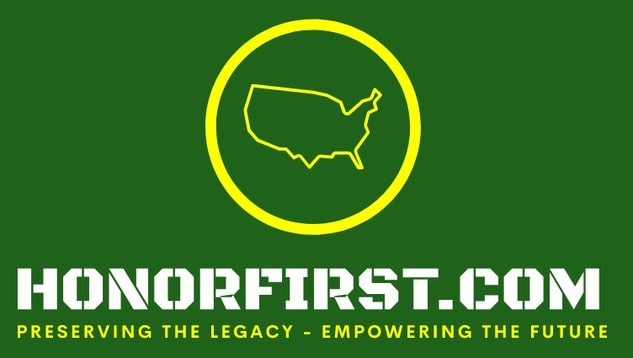March 26 - April 1IntroGood morning, Welcome to another This Week in USBP History! Last week I highlighted the unrecognized heroism of retired Supervisory Border Patrol Agent Mark Hall. His story and hundreds like his provided motivation to add sections in the USBP Honorary Awards policy (see Sections 4.14 and 5.3) that enabled their recognition for their past actions. Unfortunately, many worthy employees, and former employees still have not received recognition from the Patrol. Today, I'm going to write about the Remember the Alamo story that I used to inspire those in leadership positions to support recognizing past actions. The incident was in last week's blog, it was Ruben Mendoza's Newton-Azrak Award action anniversary from 2013. Let me tell you that action and how it helped hundred's of agents receive long overdue recognition... The Action As the midnight shift commenced, Border Patrol Agents Cary Scott and Pedro “Pete” Saldivar, engaged in roving patrol near Hebbronville, Texas, encountered what appeared to be a stranded motorist. Agent Scott approached the driver while Agent Saldivar conducted a vehicle registration check. Simultaneously, Agent Ruben Mendoza arrived at the scene, strategically positioning his marked SUV in front of the suspect's sedan. The agents had previously planned to meet at this crossroad, but the situation rapidly escalated. While Agent Scott conversed with the driver near the car's rear quarter panel, Dispatch KAK-940 crackled with the alarming news: the vehicle was reported stolen. In a swift reaction, the driver lunged into the backseat, presumably reaching for a weapon. Agent Scott instinctively followed, grappling with the suspect in a confined and precarious position. Agent Saldivar rushed to aid, attempting to extract both men from the vehicle. Agent Mendoza, hindered by space, stood by to assist as soon as the suspect was pulled out. Trapped on the floorboard, Agent Scott struggled fiercely, soon realizing the suspect was reaching for an item in a backpack. He alerted his partners of the imminent danger. Then, terror struck – Agent Scott glimpsed a pistol in the suspect's grip. The situation intensified as Agent Scott shouted "gun!" In a chaotic sequence, Agent Saldivar yanked both men out by their pant legs as the suspect fired twice, critically injuring Agent Saldivar. Agent Mendoza, drawing his weapon, prepared for a precise engagement. Agent Saldivar's severe leg wound necessitated emergency airlift and a long road to recovery, from which he thankfully emerged fully healed. Despite being down, Agent Scott valiantly continued the struggle on his knees, preventing the assailant from firing accurately. His tenacious fight, however, couldn't restrain the shooter indefinitely. In a tense and dark roadside showdown, Agent Mendoza, faced with extraordinary pressure, fired eight shots, each hitting the suspect, decisively ending the altercation. Recognition and Controversy In light of their heroic deeds, the Laredo Sector nominated Agents Ruben, Pete, and Cary for the prestigious Newton-Azrak Award, the Patrol's highest accolade. Historically, this award recognized teams or groups, but by 2018, it shifted to honoring individual actions only. The nomination, however, hit a snag in Washington DC. The refusal, originating ambiguously from USBP Workforce Management or CBP HRM, cited a policy against recognizing more than two agents in a single action, contradicting established precedents. Confronted with this dilemma, Laredo Sector honored Agent Ruben with the Newton-Azrak Award for neutralizing the threat. Agent Saldivar, wounded in the line of duty, received the Commissioner’s Meritorious Service Award for Valor and the USBP Purple Cross. Regrettably, Agent Scott's gallantry went unrecognized. A Mission for Recognition In 2017, I assumed the role of the Patrol’s historian and awards coordinator, driven by a passion to ensure that our workforce's outstanding deeds receive the recognition they deserve. Soon after, inquiries about Agent Scott's overlooked valor reached my desk. Delving into the case, I uncovered the true extent of his heroism, corroborated by the Texas DPS report which credited him with saving lives through his unyielding resistance. This revelation propelled a campaign across the USBP Senior Executive ranks and up to the Commissioner, emphasizing the critical importance of employee recognition and the glaring oversight in Agent Scott's case. Finally, justice was served. Years after his courageous act, Agent Scott was awarded the USBP Commendation Medal with a “V” device, the Patrol’s second-highest honor for heroism. This long-awaited acknowledgment not only honored his exceptional bravery but also set a precedent for honoring many more agents with meritorious past actions, with hundreds still awaiting their due recognition. In commemorating Agent Scott's valor, we recommit to ensuring every act of courage and sacrifice within our ranks is duly honored. The journey continues. Now to the history... This week stars in 1907 with 19 people coming to Jeff Milton's rescue after he had accidentally shot someone in the foot. We have a 1926 document that provides the earliest known evidence of the Patrol being authorized to enforce laws other than immigration laws. Also in 1926, the single most influential document in USBP history came into effect, General Order 61. Of course, there's much more! We celebrate two Newton-Azrak Award recipients on the anniversaries of their actions. We remember four of our fallen on the anniversaries of their deaths. Enjoy and have a fantastic week! Cliff PS -
ESPRIT DE CORPSThe workplace climate resulting from a combination of organizational pride and employee morale.
Esprit de corps is reinforced through the shared goals, mission and values of the organization and its employees. The definition turns Esprit de Corps into a simple formula and defines parts that comprise organizational pride and employee morale. Esprit de Corps = Organizational Pride + Employee Morale Esprit de Corps is the key to a healthy organization and engaged employees. Honor First is foundational to the Border Patrol's organizational pride and integral to its Esprit de Corps. DOCUMENTS AND EVENTS1907
1926
1930
1932
1935
1942
1955
1973
NEWTON-AZRAK AWARD ACTION ANNIVERSARIESFollow this link to see examples of USBP employees Upholding Honor First.
1994 Robert S. Herrera Border Patrol Agent Yuma Sector On March 29, 1994, at approximately 9:30 a.m., Border Patrol Agent Robert S. Herrera responded to an intrusion device that had indicated activity near the Sanchez Canal, west of San Luis, Arizona. Upon Arrival, Agent Herrera observed a subject who appeared to be a male juvenile swimming to the east bank of the canal. While watching the subject swim to the other side, BPA Herrera’s attention was caught by a disturbance in the water just to the south of where the first subject was swimming. Looking to the south, Agent Herrera saw a person’s head break the surface of the water and then go back under. Continuing to watch, Agent Herrera saw the person pop up again, flail the water, and gasp for air before disappearing beneath the surface again. By the time the individual went under for the third time, Agent Herrera was on the bank of the canal, dropping his leather as he jumped into the water. In the middle of the canal, Agent Herrera was able to grab and eight-year-old child and bring him safely back to shore where BPA Matthew Sutton pulled him up onto dry land. Robert Herrera’s actions on the morning of March 29, 1994, were above and beyond what is normally expected of an agent. He imperiled his own safety by leaping into a polluted canal to save the life of a child. 1999 William T. Veal Chief Patrol Agent San Diego Sector On the night of April 1, 1999, eastern San Diego County experienced very low temperatures and unexpected snow during a fierce overnight storm, which left many illegal entrant aliens stranded and lost in the rugged mountainous terrain of the area. Many of these people were in great peril of imminent death and at least seven others had already succumbed. After ensuring that Sector resources were mobilized to cope with this emergency, Chief Patrol Agent William T. Veal, in the early morning hours of April 2, responded by flying into service the Border Patrol’s heavy lift UH-1 helicopter. Joined by the Patrol Agent in Charge of Air Operations, John D. Pool and Deputy Chief Patrol Agent Harold R. Beasley, he flew into very hazardous weather conditions to effect the rescue of stranded and hypothermic aliens. During this time, Chief Veal rescued eight aliens who were hypothermic and in imminent danger of death. The attending physician stated to rescue personnel that one of these individuals would have died had he not received medical attention within the hour. Additionally, by flying through treacherous terrain in deteriorating weather conditions, while fighting low ceilings, clouds, and fog, Chief Veal inserted Border Patrol and San Diego County Search and Rescue teams into accessible areas to search for stranded aliens. This included making landings in the same rugged terrain, at times with only one tip of a skid touching the ground. With no regard for his personal safety, Chief Veal continued search and rescue activities until he was assured that no additional aliens were in peril. He flew a total of 6.9 hours with the only breaks being three brief refueling stops. U.S. BORDER PATROL FALLEN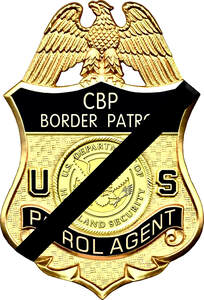 U.S. Border Patrol Badge with a Mourning Band U.S. Border Patrol Badge with a Mourning Band As of March 6, 2023 the U.S. Border Patrol has suffered 154* fallen. Titles
The names that appear below hold a place of honor. They have made the ultimate sacrifice in an effort to fulfill the oath each officer took to protect and defend the United States of America. The facts regarding each officer are presented without major editing of the "language of the day" found in the reports detailing the circumstances of each event. This is done to provide the reader an association with historical timeframes. Employees who died in the line of duty due to being exposed to deadly illnesses will not have the cause of death listed. I will note that Border Patrol Agent John Charles Gigax is not recognized as officially fallen by Customs and Border Protection or the U.S. Border Patrol. The Border Patrol Foundation and the Border Patrol Museum also fail to recognize him. He is remembered by all except organizations containing "Border Patrol" in their title. He is remembered by the:
The U.S. Border Patrol, the Border Patrol Foundation, and the Border Patrol Museum should fix their oversight. HonorFirst.com remembers and lists Agent Gigax among the fallen. 1974
Lee L. Bounds Date of Birth: November 24, 1936 Entered on Duty: June 22, 1970 Title: Patrol Agent End of Watch: March 29, 1974 Details: Border Patrol Agent Lee L. Bounds of the Lordsburg Station, El Paso Sector, was killed in a jeep accident on March 29, 1974. He was traveling alone on a road between Animas and Rodeo, New Mexico, southwest of Lordsburg, and ran the jeep off the right shoulder of the road. He lost control when he attempted to steer the vehicle back onto the road and the jeep overturned. Bounds was thrown from the vehicle, which rolled over him before stopping in an upright position, Mr. Bounds’ head was crushed. The jeep, which was equipped with seat belts and roll bar, was damaged extensively. Gravesite 1995 Luis A. Santiago Date of Birth: November 9, 1964 Entered on Duty: June 6, 1994 Title: Border Patrol Agent (Trainee) End of Watch: March 28, 1995 Details: At approximately 11:45 p.m., Agent Santiago was working in a canyon near Lower Otay Reservoir when he and other agents saw a group of about 20 illegal aliens. The agents identified themselves as Border Patrol and ordered the aliens to stop. The group scattered and the agents followed. Agent Santiago gave chase along the rim of the canyon, taking a narrow trail that leads to the edge of a cliff. He lost his footing on loose rock and slippery grass and fell approximately 120 feet to his death. On June 6, 1994, Luis Santiago joined the U.S. Border Patrol as a BPA (Trainee) at the San Diego Sector/Brown Field Station in San Diego, California. After entering on duty, he was sent to the Federal Law Enforcement Training Center in Glynco, Georgia. On October 18, 1994, he graduated from the 267th Session and returned to San Diego. Agent Santiago was one week short of taking his ten-month examination. Gravesite 1999 Stephen M. Sullivan Date of Birth: July 6, 1971 Entered on Duty: August 4, 1996 Title: Border Patrol Agent End of Watch: March 27, 1999 Details: On Saturday, March 27, 1999, Border Patrol Agent Stephen M. Sullivan was transporting a group of aliens on the Otay Truck Trail when his vehicle overturned and rolled down an embankment. Three of the aliens, who had been thrown from the vehicle, climbed up out of the embankment and approached another Border Patrol Agent, stating that others were still inside the vehicle and had been injured. Four people, including Agent Sullivan, were killed in the accident. Agent Sullivan began his career with the INS as an Adjudications Officer in Los Angeles. He was hired by the Border Patrol in September 1997. At the time of his death, he was assigned to the El Cajon Station of the San Diego Sector. Gravesite 2008 Jarod C. Dittman Date of Birth: September 9, 1979 Entered on Duty: March 5, 2007 Title: Border Patrol Agent End of Watch: March 30, 2008 Details: Border Patrol Agent Jarod C. Dittman was killed in a single-vehicle accident near Jamul, California in the early morning hours of March 30, 2008. Agent Dittman was driving from the Brown Field Border Patrol Station to his assigned patrol area, when his service vehicle rolled over, ejecting Agent Dittman from the vehicle. Another Border Patrol agent drove up on the scene and immediately called for emergency assistance. Due to the heavy fog, an airlift helicopter could not respond. Agent Dittman was pronounced dead while enroute to the hospital. Agent Dittman entered on duty with the U.S. Border Patrol on March 5, 2007, as a member of the 660th session of the Border Patrol Academy. He was assigned to the Brown Field Station immediately after graduation from the Academy. Prior to joining the Border Patrol, Agent Dittman served in the Pennsylvania National Guard. Gravesite
Comments
March 19 - March 25Intro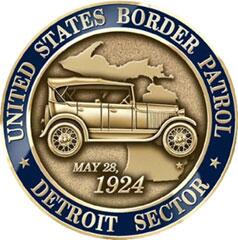 Detroit Sector Challenge Coin Detroit Sector Challenge Coin Good morning, Welcome to another This Week in USBP History! Last week, we spoke about the Patrol (and CBP) righting a 96-year-old wrong by finally recognizing the death of Patrol Inspector Orin F. Hush as having occurred in the line of duty—a shining example of valuing the workforce. That discussion naturally led me to point out the 23-year-old wrong, in which the Patrol submitted the paperwork to have Border Patrol Agent John Charles Gigax honored by having his name inscribed on the National Law Enforcement Officer's Memorial (NLEOM), but has refused to add his name to their Honor Roll and the CBP Valor Memorial (utterly unsatisfactory and easily remedied). After that post, and to my surprise, I received a phone call and an email from USBP HQ, which left me with the impression that the Patrol has no plans to honor Agent Gigax. It's astounding that they would have his name put on the NLEOM but not honor him themselves! Moving along, last week I promised to continue discussing the importance of valuing the workforce, with a focus on the individual primarily responsible for Patrol Inspector Orin F. Hush's death receiving its proper recognition—retired Acting Watch Commander Mark Hall. Mark graduated with Class 167 and EOD'd in 1984. He spent a few years on the southern border and the rest of his career (over 30 years) in Detroit Sector. He had been a Supervisory Border Patrol Agent for 15 years (2003-2018) and loved being a in the field with the troops. Mark stayed in the Patrol until the mandatory age of 57 and retired February 28, 2018. Little do most people know, Mark is a bona fide Border Patrol hero, having been in four harrowing lifesaving situations. Instead of recounting them all, I'll focus on one particular incident... After Mark had retired from the Border Patrol he became a non-uniformed rehired annuitant (02/2019-02/2022). During that time, one of his coworkers discovered a conspicuous act of heroism in which he and his partner had participated in 1990. Allow me to share the story with you. On August 27, 1990, Border Patrol Agents Mark Hall and Albert Ornelas demonstrated exceptional bravery while assisting Detroit Police Officers in apprehending a dangerous criminal in Detroit, Michigan. The suspect, Pedro Herrera, had previously fired upon officers and was intent on causing further harm to law enforcement. During the pursuit, Herrera lost control of his stolen vehicle and started firing at the officers. Agents Hall and Ornelas, without hesitation, engaged the gunman in a firefight, risking their lives to protect their fellow officers and the community. Notably, both agents faced great peril without cover or concealment as they courageously engaged Herrera, showcasing their unwavering commitment to the safety of others. Their swift and decisive actions ultimately led to Herrera's arrest and the prevention of further harm. Their courage and selflessness in the face of imminent danger not only saved the lives of their fellow officers but also fostered a strong bond of trust and mutual admiration between the U.S. Border Patrol and the Detroit Police Department. Despite their heroic actions, Agents Hall and Ornelas have not yet received formal recognition from the U.S. Border Patrol. Mark's coworker, familiar with the USBP Honorary Awards program and its ability to recognize past acts, began collecting evidence of his heroism, such as the 2019 letter below written by Robert B. Dunlap, Chief, Wayne County Sheriff's Office. Robert was one of the two Detroit police officers that Mark and his partner saved in 1990.
Once enough information was gathered, nominations for Newton-Azrak Awards were submitted for Mark and Albert. However, by April 2020, Chief Ortiz had prohibited the consideration of any event occurring more than two years prior unless he granted a waiver. Detroit Sector submitted the waiver, and it was promptly denied. In August 2022, Chief Ortiz reevaluated his previous decision to disallow recognition of past acts and subsequently directed the revival of all previously disapproved nominations, affecting 370 employees (see This Week in USBP History, Vol. 52). This decision ensures that these acts will undergo the appropriate process to receive the recognition they deserve. However, Mark's and Ornelas' nominations were never entered into the nomination system (BPETS), because their waivers were denied. They were not part of the revived nominations affecting 370 employees. As the 33rd anniversary of this event approaches, it is vital to acknowledge the outstanding acts of bravery displayed by Agents Mark Hall and Albert Ornelas, whose actions have left a lasting impact on the law enforcement community and the city of Detroit. I should mention that Mark and Robert developed a lasting friendship and talk to each other regularly. Albert left the Patrol in 1992 and worked as a criminal investigator with the Drug Enforcement Administration. He would later move on and become a Federal Air Marshall where he retired in 2008. This week's update starts in 1907 when Jeff Milton accidentally shot a man in the foot while breaking up a dog fight. We have a 17-page outline penned by Charlie Askins "for a course of Instruction (pistol) for future Border Patrol Training Schools". We have a 7-page document from 1953 discussing the importance of fencing in the modern-day Rio Grande Valley Sector. And much more! We celebrate nine Newton-Azrak Award recipients on the anniversaries of their actions, including the first two female recipients from 1994. We remember three of our fallen on the anniversaries of their deaths. Enjoy and have a fantastic week! Cliff PS -
ESPRIT DE CORPSThe workplace climate resulting from a combination of organizational pride and employee morale.
Esprit de corps is reinforced through the shared goals, mission and values of the organization and its employees. The definition turns Esprit de Corps into a simple formula and defines parts that comprise organizational pride and employee morale. Esprit de Corps = Organizational Pride + Employee Morale Esprit de Corps is the key to a healthy organization and engaged employees. Honor First is foundational to the Border Patrol's organizational pride and integral to its Esprit de Corps. DOCUMENTS AND EVENTS1907
1926
1930
1935
1942
1945
1953
NEWTON-AZRAK AWARD ACTION ANNIVERSARIESFollow this link to see examples of USBP employees Upholding Honor First.
1979 Kenneth D. Crockett - group photo Border Patrol Agent Yuma Sector Larry M. Herbert Investigator Yuma, Arizona William A. McIver - award documents, photo 1, photo 2 Border Patrol Agent Houlton Sector On March 25, 1978 at approximately 6:30 PM, Agent Larry Herbert was near a construction bridge that spans the Andrade and Morales area near Yuma, Arizona. The water which flows under the bridge is constricted which creates an extremely dangerous and turbulent whirlpool. As Agent Herbert approached the bridge, he saw three people in a small boat. The operator of the boat was frantically attempting and failing to start the boat's motor. Agent Herbert immediately radioed for help. Agent Herbert attempted unsuccessfully to reach the people with a tow strap before it was pulled into the turbulent waters where it capsized spilling the occupants into the water. All of the occupants were having difficulty keeping their heads above water. Agent Herbert was able to quickly pull two of the victims from the water. Keeping the third person in sight, he instructed one of the people he had just saved to use his Service vehicle's radio to advise that more help was needed. Upon seeing that the third victim had been pulled into the whirlpool, Agent Herbert jumped into the water to rescue him. Becoming exhausted and unable to save the victim, Agent Herbert swam to shore. As Agent Herbert swam to shore, Agent William McIver and Agent Kenneth Crockett arrived at the scene. Agent McIver immediately jumped into the water and entered the whirlpool with the victim. After a tremendous struggle, Agent McIver was able to escape the whirlpool with the victim. Having become exhausted, Agent McIver couldn't get himself and the victim out of the water. Agent Crockett then reach out and was able to pull both Agent McIver and the third victim to shore. 1992 Theo D. Hudson - nomination memo, 1992 commissioner's awards pamphlet Senior Patrol Agent Tucson Sector Presented on March 19, 1992, to Senior Border Patrol Agent Theo D, Hudson for his outstanding and innovative contributions to the Intelligence Program in the Tucson Sector of the United States Border Patrol. His innovations have greatly enhanced the law enforcement efforts of this Sector in combatting narcotic and undocumented alien smuggling. During the period April 1, 1990 to March 31, 1991, while assigned to duties as Intelligence Agent, Theo D, Hudson designed and developed a "situation board" for tracking and documenting narcotic and undocumented alien entries into the United States which successfully evaded our apprehension. This system now enables the Tucson Sector to identify the trends, patterns and methods used by smugglers to avoid detection. It has been directly linked to the detection of three (3) major air smuggling routes through southeastern Arizona, the-seizure of numerous tons of marijuana and the apprehension of hundreds of undocumented aliens and their smugglers. Smugglers are now forced to resort to more radical and unconventional methods of smuggling, such as the recently discovered "Cocaine Tunnel" in Douglas, Arizona. Due to the proven value of this system of intelligence gathering in the Tucson Sector, Agent Hudson's system is currently being considered for service wide implementation. 1994 *First female Newton-Azrak Award recipients Christina M. Carnes* Border Patrol Agent El Paso Sector David Hinojosa Jr. Border Patrol Agent El Paso Sector Cheryl R. Smith* Border Patrol Agent El Paso Sector Bruce L. Cooke Supervisory Border Patrol Agent El Paso Sector On March 20, 1994, Rose Johnson-Navarro was involved in a one-vehicle accident on Paisano Avenue in El Paso, Texas. Her vehicle had gone out of control, crashed through a fence and guard rail, and came to rest on its wheels with the front end slanted down towards a deep canal. Supervisory Border Patrol Agent Bruce L. Cooke, Border Patrol Agents Cheryl Smith, Christina M. Carnes, and David Hinjosa Jr. of the El Paso Border Patrol Station responded to the scene. The entire front part of the vehicle was engulfed in flames that swept back over the front half of the vehicle. The inside of the vehicle was completely obscured with smoke. A bystander informed the agents that no one had escaped from the vehicle. With the knowledge that someone was still inside the burning vehicle and at great personal risk, the agents attempted to extinguish the fire with a fire extinguisher. They managed to suppress the fire enough to open the driver side door. They then entered the burning vehicle and extricated Ms. Johnson, who was injured and unable to escape. After being carried to a safe distance, Ms. Johnson advised the agents that her two children were still inside the vehicle. Agents Smith, Carnes, and Hinjosa then returned to the vehicle that was almost fully engulfed in flames and managed to search for the missing children to no avail. It was later determined that the children had not been in the vehicle. Agents Cooke, Smith, Carnes, and Hinjosa, at their own personal life risk, saved the life of Rose Johnson-Navarro by exercising unusual courage and bravery. 2013 Ruben Mendoza - photo Border Patrol Agent Hebbronville, Texas For his heroic actions to save a wounded agent under extreme duress. On March 21, 2013, Agent Ruben Mendoza was involved in a lethal force incident near Hebbronville, Texas. Two agents on roving patrol stopped to assist an individual they initially believed to be a stranded motorist. During the course of the encounter, the agents discovered the motorist was a violent felon, driving a stolen vehicle. When one of the agents attempted to search the subject before arrest, the subject resisted. As the two other agents struggled with the subject, Agent Mendoza moved to a position of tactical advantage and drew his service weapon. The subject gained access to a hidden handgun, and fired at the two agents, wounding one of them. At that time, BPA Mendoza fired several rounds, incapacitating the subject. Agent Mendoza then rendered first aid to the wounded agent. Agent Mendoza’s composure and professionalism under extreme pressure prevented further harm to his colleagues.
U.S. BORDER PATROL FALLEN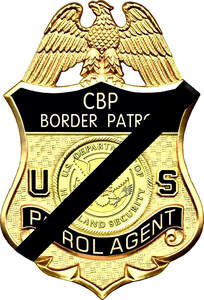 U.S. Border Patrol Badge with a Mourning Band U.S. Border Patrol Badge with a Mourning Band As of March 6, 2023 the U.S. Border Patrol has suffered 154* fallen. Titles
The names that appear below hold a place of honor. They have made the ultimate sacrifice in an effort to fulfill the oath each officer took to protect and defend the United States of America. The facts regarding each officer are presented without major editing of the "language of the day" found in the reports detailing the circumstances of each event. This is done to provide the reader an association with historical timeframes. Employees who died in the line of duty due to being exposed to deadly illnesses will not have the cause of death listed. I will note that Border Patrol Agent John Charles Gigax is not recognized as officially fallen by Customs and Border Protection or the U.S. Border Patrol. The Border Patrol Foundation and the Border Patrol Museum also fail to recognize him. He is remembered by all except organizations containing "Border Patrol" in their title. He is remembered by the:
The U.S. Border Patrol, the Border Patrol Foundation, and the Border Patrol Museum should fix their oversight. HonorFirst.com remembers and lists Agent Gigax among the fallen. 1929
Earl A. Roberts Date of Birth: August 21, 1894 Entered on Duty: January 21, 1929 Title: Patrol Inspector End of Watch: March 24, 1929 Details: Patrol Inspector Earl A. Roberts was shot by a liquor smuggler at about 8:00 p.m. Saturday, March 23, 1929, and died from the wound at 5:00 p.m., Sunday, March 24, 1929. The shooting occurred on the St. Clair River, in Algonac, Michigan. Inspector Roberts was working with Patrol Inspector Stanley H. Graham, when they noticed a motorboat towing a small rowboat approaching from the direction of Canada. The officers proceeded along the shore following the course of the boat in an attempt to intercept it when the shore was reached. The officers separated in order to converge on a probable landing point. The motorboat came to the shore, at which time Patrol Inspector Roberts stepped aboard the stern of the boat and identified himself as a federal officer. Patrol Inspector Graham, who was standing on the shore a few feet from the boat, flashed his light on the occupants and observed that an individual known to him as Vet Brown was standing in the center of the boat with a .45 caliber revolver aimed at Inspector Roberts. Inspector Graham instructed Brown to surrender; however, the latter fired, point-blank, at Inspector Roberts and immediately whirled toward Inspector Graham, firing the remaining bullets in that direction. Inspector Graham emptied his gun in returning fire, but none of the shots exchanged hit their mark. A second individual in the boat, later identified as Clayton Smith, had jumped from the boat into the rowboat that was being towed and had cast-off, setting a course for Canada. Smith was a witness to the events and later testified on behalf of the government in the case against Brown. Survivor benefits - As per this document, his wife received $82.50 per month. Gravesite 1930 Harry E. Vincent Date of Birth: October 3, 1895 Entered on Duty: February 16, 1926 Title: Patrol Inspector End of Watch: March 25, 1930 Details: During the evening of March 23, 1930, Senior Patrol Inspector James E. Renshaw and Patrol Inspector Harry E. Vincent were inspecting northbound traffic about one mile north of Oceanside, California. The traffic check operation was being conducted on a temporary roadway where new construction was underway. At 10:00 p.m., an automobile traveling in a southerly direction missed the detour and struck down Officers Renshaw and Vincent. Both officers were knocked unconscious. A bystander, Mr. William Trotter, took charge of the situation. Mr. Trotter had the officers transported to a clinic in Oceanside. He also sent word to other Patrol Inspectors working nearby in conjunction with the traffic check operation. Senior Patrol Inspector Renshaw was not seriously injured but Patrol Inspector Vincent was in serious condition with a fractured skull. The following day preliminary arrangements were made to move Inspector Vincent to the Navy Hospital in San Diego, California, but after consultation by several doctors, it was agreed that there was little chance for recovery and no chance at all, if Inspector Vincent was moved. Patrol Inspector Vincent passed away at 5:00 a.m., March 25, 1930. Survivor benefits - As per this document, his wife received $75 for her and their child per month. Upon his wife remarrying, the child received $41.67 per month. Gravesite 1932 Frank Vidmar, Jr. Date of Birth: September 20, 1901 Entered on Duty: July 6, 1931 Title: Patrol Inspector End of Watch: March 24, 1932 Details: Patrol Inspectors Frank Vidmar, Jr. and James W. Hudson were performing voluntary extra duty in the vicinity of Lewiston, New York, in an effort to apprehend a known alien smuggler. Since the government vehicle customarily used was known to the smuggler, the personal automobile of Patrol Inspector Vidmar was being used, with Inspector Hudson doing the driving. The smuggler was encountered in his automobile, accompanied by two other persons, at Lewiston Heights during the early morning hours. He disregarded the command of the officers to stop, and increased the speed of his vehicle trying to escape. The officers gave chase pursuing the smuggler's car at 50 miles per hour into the city of Niagara Falls. At a curve in the roadway, the officers' car skidded on the icy pavement and collided broadside with an oncoming trolley car, demolishing the car owned by Patrol Inspector Vidmar, and causing injuries that resulted in his death. Inspector Vidmar died at 4:52 p.m., March 24, 1932, after failing to regain consciousness. He sustained a fractured skull, brain concussion, and a crushed chest. Patrol Inspector Hudson was badly injured but survived. Survivor benefits - As per this document, his wife received $67.50 per month for her and their child. Gravesite March 12 - March 18IntroGood morning, Welcome to another This Week in USBP History! This past week marks the foruth time that the Border Patrol has reviewed the circumstances surrounding an employee's death and subsequently ruled it to be a line of duty death (LODD). This week, the 1927 death of Patrol Inspector Orin F. Hush was reviewed by an HQ panel who determined his death to be a LODD. 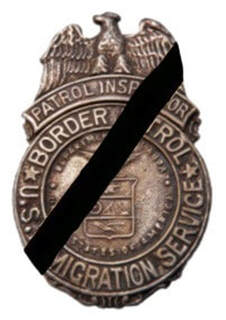 A Department of Labor, Immigration Service, Patrol Inspector Badge A Department of Labor, Immigration Service, Patrol Inspector Badge In January of 1927, the local constable for Marine City, Michigan, had his home burglarized three times. He asked PI Hush for help with apprehending the suspected burglar. PI Hush and the constable took turns watching the home during the evenings. On the night of January 31, 1927, PI Hush was killed by friendly fire in a case of mistaken identity while attempting to secure the home. PI Hush was a World War I veteran, who showed commendable dedication to his country before joining the Immigration and Naturalization Service. PI Hush entered on duty on August 18, 1925, and was assigned to the 11th District Patrol Division, Sub-District Two in Marine City, Michigan. PI Hush’s death was initially determined to be a non-line-of-duty death. In March 2023, the circumstances of his death were re-evaluated by a panel and determined to be a line-of-duty death. At the time of his death, PI Hush was survived by his wife Helena, who is now deceased, and sister Sadie. Current known living relatives include his niece and nephew, Alice and Chad Geurink. How did this happen? Why did it take 96 years for Orin's death to receive this somber recognition? Why is this important? Well, let me answer those questions for you, one at a time. What happened? When Inspector Hush was killed in 1927, he was not in a paid status. He was off-duty. At the time, off-duty deaths and accidental deaths were not considered to be LODDs. Therefore, his death was never included in any Honor Roll and faded from the Patrol's memory. Similarly, it would be several years before Inspector James F. Mankin's 1924 death was carried in the rolls of the Immigration Service's honored fallen. This is evident by his name being omitted in the 1927 Commissioner-General's Annual Report to the Secretary of Labor (pg 18). Why did it take 96 years for Orin's death to receive this somber recognition? Fast forward to 2021... A police officer in the Detroit area was researching old newspapers from the 1920's and stumbled across Inspector Hush's death. After reading several different articles, he was surprised to find that Inspector Hush's death was not an LODD. The officer took his research and gave it to Mark Hall, a USBP employee.. Mark was a rehired annuitant at Detroit Sector, having graduated with Class 167 and EOD'd in 1984 and retired a year or two earlier. Mark had spent over 30 years in Detroit Sector and had attained the rank of Watch Commander. He was known and respected. Mark presented the research to the Chief Patrol Agent and requested permission to continue investigating Inspector Hush's death while on duty. Without hesitation, permission was given. Mark's interest blossomed into passion as he followed every lead that he could uncover, and explored every path he could find. For instance, Mark found out that the Detroit District gave Inspector Orin a funeral with full honors and that Inspector Orin was buried in his uniform. Mark's incredible research was given to USBP HQ where it was repackaged in the form a Line of Duty Death Determination packet and presented before a panel of standing Chief Patrol Agents for consideration. They determined Inspector Orin had been killed while performing a law enforcement action and thus, he died in the line of duty. Inspector Orin's name will be inscribed on the National Law Enforcement Memorial and the CBP Valor Memorial. He will forevermore be remembered as one of the Border Patrol's fallen. Why is this important? Why is honoring and remembering the fallen important? Why is it important to recognize employee achievements, service, and heroism? Why is it important to have USBP Chaplains and Peer Support members? There is a duality in the answer. The first is that we are all United States citizens. And with all of the diversity and differences, we still have a sense of right and wrong that is pretty common. In this case, people who die in the line of duty should be remembered... The second, to me, relates to the definition of Esprit de Corps that is included in every blog post, and has to do with valuing the workforce. The Patrol honoring of the fallen conveys that it values its employees. It says, through action, if you get killed in the line of duty, we will honor and remember you. Similarly to recognitions... If you achieve, serve, or perform acts of heroism, the Patrol will recognize and value you. Similarly to the reason that the USBP Chaplains and Peer Support teams exist... If you need support during a crisis, we value you and will support you! Going on a quick tangent, I have the same view concerning employee deaths as I do employee recognitions... If doubt exists, choose the path most beneficial to the employee. That is showing value and a bias toward the workforce, a la Simon Sinek. It is for that very reason that Border Patrol Agent John Charles Gigax's death is highlighted every week, with the reminder that he is not recognized as officially fallen by Customs and Border Protection, the U.S. Border Patrol, or our friends at the Border Patrol Foundation, or the Border Patrol Museum, even though he is remembered by the:
Where is the bias for Border Patrol Agent John Charles Gigax? How could his name be inscribed on the National Law Enforcement Officer Memorial but not on the Honor Rolls of the U.S. Border Patrol, or our friends at the Border Patrol Foundation, or the Border Patrol Museum? For more information, read This Week in USBP History, Vol. 62. Next week, I'll continue discussing having a bias toward and valuing the workforce with a focus on the person who is primarily responsible for Patrol Inspector Orin F. Hush's death receiving it's proper recognition, retired Watch Commander Mark Hall. This week begins in 1918 as Frank Berkshire's plan to create the Border Patrol starts to gain traction. We have the signing of General Order 61 in 1926, what I consider to be the single, most influential document in USBP history. We have the earliest reference to a rough duty uniform (Class C for you old patrollers) from 1934 and much more! We remember four Newton-Azrak Award recipients on the anniversaries of their heroic actions. We also remember the loss of four of our fallen, including two that fell in the same event. Ramon Nevarez, Jr. and David J. Tourscher fell due in the same incident in 2007. A sad fact is that the USBP has lost two Agents/Inspectors due to the same event nine times (18 fallen). Their names are listed below:
Daniel P. Cox and Edgardo Acosta-Feliciano both fell on July 31, 2021. However, their causes of death were not related. Enjoy and have a great week! Cliff PS -
ESPRIT DE CORPSThe workplace climate resulting from a combination of organizational pride and employee morale.
Esprit de corps is reinforced through the shared goals, mission and values of the organization and its employees. The definition turns Esprit de Corps into a simple formula and defines parts that comprise organizational pride and employee morale. Esprit de Corps = Organizational Pride + Employee Morale Esprit de Corps is the key to a healthy organization and engaged employees. Honor First is foundational to the Border Patrol's organizational pride and integral to its Esprit de Corps. DOCUMENTS AND EVENTS1918
1925
1926
1933
1934
1939
1942
NEWTON-AZRAK AWARD ACTION ANNIVERSARIESFollow this link to see examples of USBP employees Upholding Honor First.
1992 Alan W. Marshall Border Patrol Agent Buffalo Sector During the evening shift on March 15, 1992, Border Patrol Agent Alan W. Marshall made a winter water rescue of an alien he was pursuing, who broke through an ice-covered pond. In trying to reach the man, Agent Marshall was plunged into the same water as the ice gave way beneath him. Agent Marshall’s strength, endurance, and bravery saved not only himself, but also the alien twice that night. After having to physically lift the man from the water, Agent Marshall had to force the man to stay on his feet and walk to reach shelter in 17-degree weather. Christopher M. Jacobs Detention Enforcement Officer Buffalo, New York On March 16, 1992, Detention Enforcement Officer Christopher M. Jacobs saved a passenger from a burning vehicle. He and another officer were escorting a detained alien on the New York State Thruway. They were at a tollbooth when a vehicle traveling at a high speed plowed into the rear of another vehicle in the booth adjacent to the D & D vehicle. There was an instantaneous explosion that pushed the vehicle forward about 200 feet, engulfing the car into a fireball. Officer Jacobs exited his vehicle, obtained a fire extinguisher, and ran to the vehicle. The driver was able to exit on his own but the passenger was semi-conscious and unable to get out. Officer Jacobs entered through the driver’s door, ignoring the real danger for himself, and got the passenger out. He administered first aid until the ambulance arrived. 1998 Richard L. Ashlaw Patrol Agent In Charge Swanton Sector For his heroic actions and unselfish disregard of his own personal safety to come to the rescue of James Baker, who otherwise had no chance of surviving the New Albion Hotel fire March 16, 1998. Patrol Agent in Charge Ashlaw’s actions certainly went above and beyond the responsibilities and duties of a Border Patrol Agent. 1999 Floyd Southerland III Border Patrol Agent Del Rio Sector On March 18, 1999, at approximately 12 noon, Border Patrol Agent Floyd “Buddy” Southerland III and his partner responded to sensor activity three miles up river from the Port of Entry at Del Rio, Texas. Upon arrival at the location of the sensors, Agent Southerland and his partner observed four subjects on the United States side of the Rio Grande River. When the four subjects saw the Border Patrol vehicle, three of the four jumped into the river and began to swim to an island in mid-river. The fourth hesitated, looked at the agents, then jumped. The fourth man could not swim. The Rio Grande River flow down river from Amistad Dam is controlled through water release monitored by the International Boundary and Water Commission. The commission had increased water release from the dam to supplement irrigation needs in the Rio Grande Valley of Texas to a level that brought the river to a very high and swift current. As Agent Southerland arrived and observed the scene, the fourth man was floundering in the water away from the shore and near the mid-river island. Agent Southerland shouted to the three men on the island to help their friend, but they refused. The Rio Grande, due to high water, was a mass of floating debris of cane stalks and other flotsam. Thinking quickly as he watched the river drag the man down and away from the shore and island, Buddy told his partner to get the spare tire from the government vehicle as he began to remove his gun belt and boots. Without hesitation and with total disregard for his own safety, Agent Southerland dove into the muddy river to search for the man. Agent Southerland’s partner cast the spare tire into the river, Agent Southerland used the tire as a floatation device, swam out, located the floundering man, pulled his head out of the water and with monumental effort, brought the man back to the safety of the river bank. The man was a 29-year-old Mexican national. Agent Southerland’s act of selfless heroism and life-saving actions of commendable efficiency and skill draw upon his training and experience acquired throughout his career with the U.S. Border Patrol. He displayed great physical courage, as well as moral courage, to do the right thing. This was the second act of heroism that Agent Southerland had been involved in during that Fiscal Year. In October of 1998, Buddy was cited by the office of the District Attorney, 63rd Judicial District of Texas, for his apprehension and arrest of a man who had kidnapped a teenaged girl, terrorized, and sexually assaulted her. It was the opinion of the District Attorney that Buddy saved her life by rescuing the girl from the man who was holding this young victim. U.S. BORDER PATROL FALLEN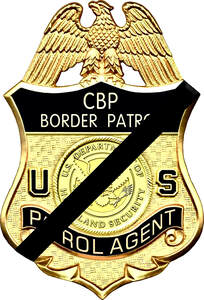 U.S. Border Patrol Badge with a Mourning Band U.S. Border Patrol Badge with a Mourning Band As of March 6, 2023 the U.S. Border Patrol has suffered 154* fallen. Titles
The names that appear below hold a place of honor. They have made the ultimate sacrifice in an effort to fulfill the oath each officer took to protect and defend the United States of America. The facts regarding each officer are presented without major editing of the "language of the day" found in the reports detailing the circumstances of each event. This is done to provide the reader an association with historical timeframes. Employees who died in the line of duty due to being exposed to deadly illnesses will not have the cause of death listed. I will note that Border Patrol Agent John Charles Gigax is not recognized as officially fallen by Customs and Border Protection or the U.S. Border Patrol. The Border Patrol Foundation and the Border Patrol Museum also fail to recognize him. He is remembered by all except organizations containing "Border Patrol" in their title. He is remembered by the:
The U.S. Border Patrol, the Border Patrol Foundation, and the Border Patrol Museum should fix their oversight. HonorFirst.com remembers and lists Agent Gigax among the fallen. 2006 Nicholas D. Greenig Date of Birth: February 20, 1978 Entered on Duty: December 1, 2002 Title: Border Patrol Agent End of Watch: March 14, 2006 Details: On March 14, 2006, Agent Nicholas Greenig was killed in a vehicle accident on the Tohono O'odham Nation in Pima County, Arizona, when the department vehicle he was riding in struck a bull walking across the highway. He and his partner were working a plainclothes detail when the accident occurred at approximately 8:00 pm. Agent Greenig had served with the Border Patrol for three years and was assigned to Ajo Station in Tucson Sector. He was raised in Laurel, Montana, where he attended public schools before he transferred to a private high school in Billings. He graduated with honors from Utah Valley State College in Provo and joined the Border Patrol in 2002. Agent Greenig was a graduate of the 535th session of the Border Patrol Academy. He was a senior patrol agent and a member of a special unit that targeted violent criminal organizations, which smuggled people and drugs. Gravesite 2007 Ramon Nevarez, Jr. Date of Birth: March 27, 1983 Entered on Duty: August 15, 2005 Title: Border Patrol Agent End of Watch: March 15, 2007 Details: On March 15, 2007, Agents Ramon Nevarez and David Tourscher were involved in a single vehicle accident on NM Highway 338 near Cotton City, New Mexico. At approximately 9:00 p.m., Agent Nevarez succumbed to his injuries at the scene. Agent Tourscher was flown to a hospital in El Paso, Texas, where he died. Agent Nevarez had served with the Border Patrol for two years. Burial Details Unknown David J. Tourscher Date of Birth: November 22, 1982 Entered on Duty: June 26, 2006 Title: Border Patrol Agent (trainee) End of Watch: March 16, 2007 Details: On March 15, 2007, Agents David Tourscher and Ramon Nevarez were involved in a single vehicle accident on NM Highway 338 near Cotton City, New Mexico. Agent Nevarez succumbed to his injuries at the scene. Agent Tourscher was flown to a hospital in El Paso, Texas, where he died early the following morning. Agent Tourscher had served with the Border Patrol for nine months. Burial Details Unknown 2021 Alejandro Flores-Bañuelos Date of Birth: November 4, 1985 Entered on Duty: March 5, 2009 Title: Border Patrol Agent End of Watch: March 15, 2021 Details: Border Patrol Agent Alejandro Flores-Bañuelos was struck by a vehicle and killed on March 15, 2021. Agent Flores-Bañuelos had responded to reports of a crash on state Route 86, a four-lane divided highway north of Marina, California. The traffic accident occurred during a dust storm that caused low visibility in the area. Flores-Bañuelos was the first to arrive on the scene and began assisting a 75-year-old woman whose vehicle had become disabled in the roadway. A second northbound vehicle struck Agent Flores-Bañuelos who was transported to Pioneers Memorial Hospital and later succumbed to his injuries. BPA Flores-Bañuelos started his CBP career on March 5, 2009 and spent his entire Border Patrol career at the Indio, California Border Patrol Station in the El Centro Sector. Prior to joining the Border Patrol, Agent Flores-Bañuelos honorably served his country in the U.S. Marine Corps. He was born and raised in Richgrove, California and graduated from McFarland High School in McFarland, California. He is survived by his wife, his three children and his mother. Gravesite March 5 - March 11IntroGood morning, Welcome to another This Week in USBP History! The U.S. Border Patrol's Values (Part 3) In the last two blog posts, we explored the U.S. Border Patrol's values. We began by discussing the Patrol's motto, "Honor First," its origins, and the values it might represent (remember, the Patrol has not defined its meaning). We then moved on to examine the Patrol's formal awards system, the USBP Honorary Awards, which were created in 2018. We discussed how an organization's values are codified in its awards system and how the USBP's Honorary Awards demonstrate the values that the Patrol holds in high regard. In this blog we will look at the historic actions of the Patrol to extrapolate its values. Remember, actions and inactions speak louder than words. The work I’m going to present was compiled years ago by retired Deputy Chief Patrol Agent Joseph Banco. I’ve said before and its worth mentioning again, I give a constant trickle of USBP history with this blog, but Joe authors incredible books full of verified and well referenced history. His books are the authority on USBP history. Please take the time and read more about Joe and find out how to buy his books. They are absolutely must reads for current and former USBP personnel, and anyone curious about the Patrol. The following is Joe Banco’s work that I have lightly edited. U.S. Border Patrol History – Historic Deployments National Security
Civil Disturbances
Natural Disasters U.S. Border Patrol Agents have supported security, law enforcement and humanitarian assistance efforts in the aftermath of numerous natural disaster such as:
Significant Border Security Operations
That’s a lot of stuff and I’m sure we could find more. But what do all those occurrences tell us about the Patrol’s values? I’m reminded of the definition of Esprit de Corps that was drafted for the Patrol. When I look at all of those occurrences, I know that I was part of an organization that is rich in history, has a tradition of performing meaningful work, and a culture of making a difference. It fills me with pride! And it is easy to see the Patrol's values, making a difference through action. And the Patrol has made a difference for decades. Those differences can be generally categorized as enforcing the laws of the United States, and providing humanitarian assistance to those in need. It is a very impressive organizational resume. This week starts in 1904 with a letter of recommendation from the Governor of the Territory of Arizona for Jeff Milton to be a Chinese Inspector. In 1925, the Detroit District Director wanted Patrol Inspectors to be designated as special agents of the Prohibition Department. There were gunfights in El Paso, and much more! We remember Adam Ruiz on his Newton-Azrak Award action anniversary. We remember four of our fallen on the anniversary of their deaths. Enjoy and have a great week! Cliff PS -
ESPRIT DE CORPSThe workplace climate resulting from a combination of organizational pride and employee morale.
Esprit de corps is reinforced through the shared goals, mission and values of the organization and its employees. The definition turns Esprit de Corps into a simple formula and defines parts that comprise organizational pride and employee morale. Esprit de Corps = Organizational Pride + Employee Morale Esprit de Corps is the key to a healthy organization and engaged employees. Honor First is foundational to the Border Patrol's organizational pride and integral to its Esprit de Corps. DOCUMENTS AND EVENTS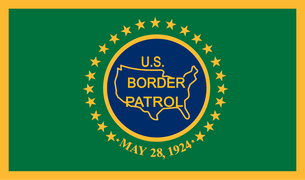 U.S. Border Patrol Flag U.S. Border Patrol Flag 1904
1925
1928
1929
1931
1935
1937
1949
1995
1998
2003
NEWTON-AZRAK AWARD ACTION ANNIVERSARIESFollow this link to see examples of USBP employees Upholding Honor First.
2008 Adam R. Ruiz Supervisory Border Patrol Agent Rio Grande Valley Sector Supervisory Border Patrol Agent Adam R. Ruiz was recognized for demonstrating unusual courage during an extremely dangerous and stressful situation. On March 11, 2008, while performing his assigned duties on U.S. Highway 281 near San Manuel, Texas, Agent Ruiz encountered a vehicle traveling northbound he suspected of being involved in human trafficking. After initiating a vehicle stop, he observed the vehicle pull over on the shoulder and into the grass off the highway. The driver absconded and the vehicle continued to travel forward and back onto the highway. While taking immediate action to prevent the vehicle from rolling into the oncoming traffic, Agent Ruiz discovered the brakes were not functioning and maneuvered the vehicle off the northbound lanes, avoiding a major collision with other traffic including a semi-tractor trailer. After finally bringing the vehicle to a stop, he discovered that there were 10 undocumented aliens in the vehicle. With the assistance of Rio Grande Valley CBP air assets, the driver was located. U.S. BORDER PATROL FALLEN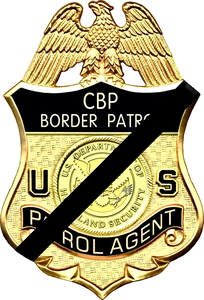 U.S. Border Patrol Badge with a Mourning Band U.S. Border Patrol Badge with a Mourning Band As of December 7, 2022, the U.S. Border Patrol has suffered 153* fallen. Titles:
The names that appear below hold a place of honor. They have made the ultimate sacrifice in an effort to fulfill the oath each officer took to protect and defend the United States of America. The facts regarding each officer are presented without major editing of the "language of the day" found in the reports detailing the circumstances of each event. This is done to provide the reader an association with historical timeframes. Employees who died in the line of duty due to being exposed to deadly illnesses will not have the cause of death listed. I will note that Border Patrol Agent John Charles Gigax is not recognized as officially fallen by Customs and Border Protection or the U.S. Border Patrol. The Border Patrol Foundation and the Border Patrol Museum also fail to recognize him. He is remembered by all except organizations containing "Border Patrol" in their title. He is remembered by the:
The U.S. Border Patrol, the Border Patrol Foundation, and the Border Patrol Museum should fix their oversight. HonorFirst.com remembers and lists Agent Gigax among the fallen. 1933
Philip D. Strobridge Date of Birth: December 28, 1904 Entered on Duty: October 1, 1930 Title: Patrol Inspector End of Watch: March 7, 1933 Details: In the early morning hours of March 2, 1933, Patrol Inspectors Philip D. Strobridge and Harold W. Brown were injured when the government automobile in which they were riding left the highway in a fog near Fallbrook, California. The officers, accompanied by Senior Patrol Inspector Irvin J. Curtis of Elsinore, California, had been detailed to Los Angeles to appear before a Federal Grand Jury and to work information relative to smuggling in aircraft. The three officers left Los Angeles at approximately 11:00 p.m., enroute to Elsinore and then on to Chula Vista. They encountered heavy fog, which hampered the driver's vision and prompted very slow driving. Near Puente, they came upon an accident on the highway in which several persons had been severely injured. The Patrol Inspectors spent about 45 minutes at the scene of the wreck directing traffic to keep the road clear and to prevent further accidents.They were relieved on arrival of Los Angeles County Deputy Sheriffs and resumed their return trip to Elsinore where Inspector Curtis lived. Reports of the accident revealed the government automobile left the highway on an "S" turn and crashed into a concrete abutment. Patrol Inspector Strobridge suffered a frontal fracture of the skull. He was transported to the U.S. Naval Hospital, San Diego, where he passed away at 1:35 p.m. on March 7, 1933. Gravesite 1947 Anthony L. Oneto Date of Birth: December 29, 1916 Entered on Duty: October 24, 1940 Title: Patrol Inspector End of Watch: March 11, 1947 Details: On March 11, 1947, while conducting routine traffic checks near Indio, California, Patrol Inspectors Anthony L. Oneto and John L. Fouquette arrested Carlos Ochoa Romero in the act of hauling four smuggled aliens. The aliens were placed in the back seat of the government car and Ochoa was instructed to drive his car to the Border Patrol Office. After a short time, Ochoa stopped his car, which was being followed by the government car, walked back, said something about his car stalling, pulled a.32 caliber pistol from his pocket, and began firing at the officers. Inspector Oneto was struck four times in the head and died instantly. Patrol Inspector Fouquette was wounded but returned the fire, wounding Ochoa, who escaped in the darkness. In spite of this activity, Inspector Fouquette was able to retain custody of the smuggled aliens until help arrived. Gravesite 1983 Victor C. Ochoa Date of Birth: March 16, 1947 Entered on Duty: June 17, 1978 Title: Border Patrol Agent End of Watch: March 11, 1983 Details: On March 11, 1983, Victor E. Ochoa, a U.S. Border Patrol Agent stationed in the Tucson Sector, Casa Grande Station, was involved in a fatal traffic accident when the van in which he was transporting prisoners collided with a dump truck at the intersection of Ralston and Papago Roads about 22 miles southwest of Maricopa in Pinal County. The accident occurred at approximately 10:45 a.m. He was transported by helicopter to St. Joseph's Hospital in Phoenix, Arizona, where he died of multiple head injuries sustained in the accident. Gravesite 1997 Miguel J. Maldonado Date of Birth: September 29, 1952 Entered on Duty: May 12, 1980 Title: Senior Patrol Agent End of Watch: March 10, 1997 Details: At approximately 11:24 a.m., Senior Patrol Agent Miguel Maldonado of the Port Isabel Station was performing sensor response patrol duties alone in a Service vehicle, traveling on Alton Gloor Road in Brownsville, Texas. An eyewitness stated that Agent Maldonado’s vehicle turned left across the centerline of the road, sliding across the roadway and into the ditch adjacent to the road. It then struck an earthen berm with its passenger side tires and rolled over one complete turn, landing on its wheels. At the time of the accident, Agent Maldonado was driving in an emergency response mode with his vehicle’s emergency lights and siren activated. Supervisory Patrol Agent Herbert J. Monette of the Brownsville Station was notified of the accident and arrived at the scene soon afterward as EMS personnel were trying to save Agent Maldonado. They then decided to transport Agent Maldonado to Brownsville Medical Center, where emergency room personnel also tried to save him. But about 12:15 p.m., Agent Monette was informed that Agent Maldonado had died from wounds sustained in the accident. The likely cause of the accident was the wet condition of the roadway. Agent Maldonado began his Border Patrol career with the Laredo Sector. He was reassigned in August 1988 as Senior Border Patrol Agent at the Port Isabel Station under the McAllen Sector, the position he held at the time of his death. Gravesite |
Clifford GillBlog author, retired U.S. Border Patrol Assistant Chief and, current U.S. Border Patrol employee advocate. Ray HarrisSite founder and owner, former Supervisory Border Patrol Agent and retired Immigration Special Agent. Joseph BancoU.S. Border Patrol historian and retired Deputy Chief Patrol Agent. Archives
July 2024
I prefer that you leave comments. However, if you wish to contact me, please do so by emailing [email protected].
|
||||||||
- Home
-
For USBP Applicants
-
USBP Pages and Links
- Firearms Qualification Course
- Military Time Buy Back
- Station MWRs
- Transitioning Out of the USBP
- Fast & Furious
- U.S. Border Patrol Fallen >
- Honor First and Esprit de Corps
- USBP Photo Galleries
- U.S. Border Patrol History >
- U.S. Border Patrol Honorary Awards
- Upholding Honor First >
- U.S. Border Patrol Authorized Devices
- Border Patrol Stories
- What's Important Now - Academy Podcast
- Badges
- Veterans
- Tips for the Media
- Links
- Acronyms
- Border Patrol Locations
- Sector/Station FaceBook Pages
- Ten Codes
- Online Forums
- Search
- Home
-
For USBP Applicants
-
USBP Pages and Links
- Firearms Qualification Course
- Military Time Buy Back
- Station MWRs
- Transitioning Out of the USBP
- Fast & Furious
- U.S. Border Patrol Fallen >
- Honor First and Esprit de Corps
- USBP Photo Galleries
- U.S. Border Patrol History >
- U.S. Border Patrol Honorary Awards
- Upholding Honor First >
- U.S. Border Patrol Authorized Devices
- Border Patrol Stories
- What's Important Now - Academy Podcast
- Badges
- Veterans
- Tips for the Media
- Links
- Acronyms
- Border Patrol Locations
- Sector/Station FaceBook Pages
- Ten Codes
- Online Forums
- Search
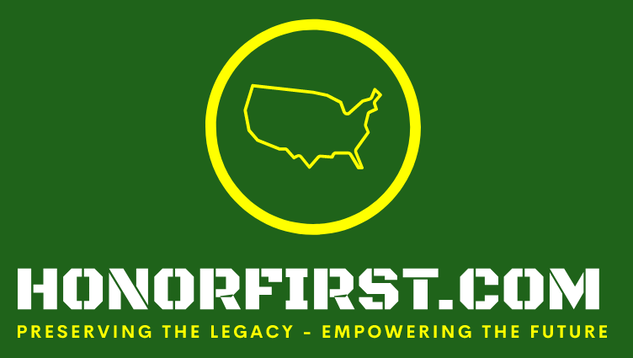

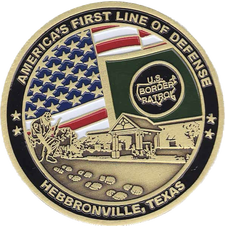
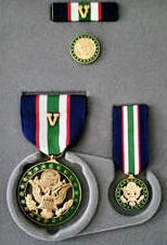
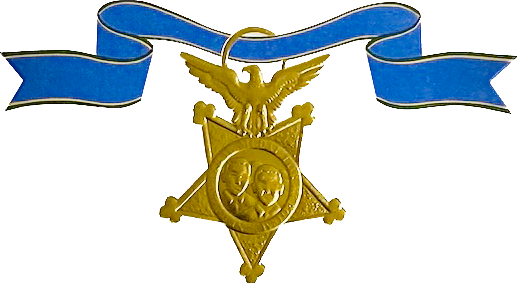
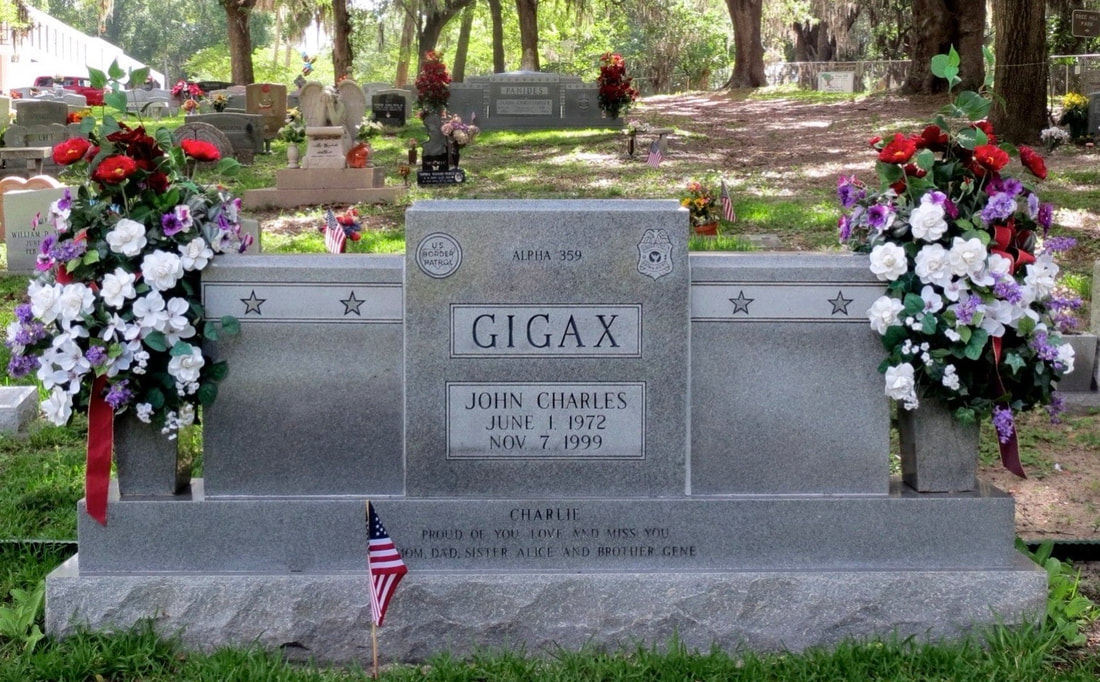
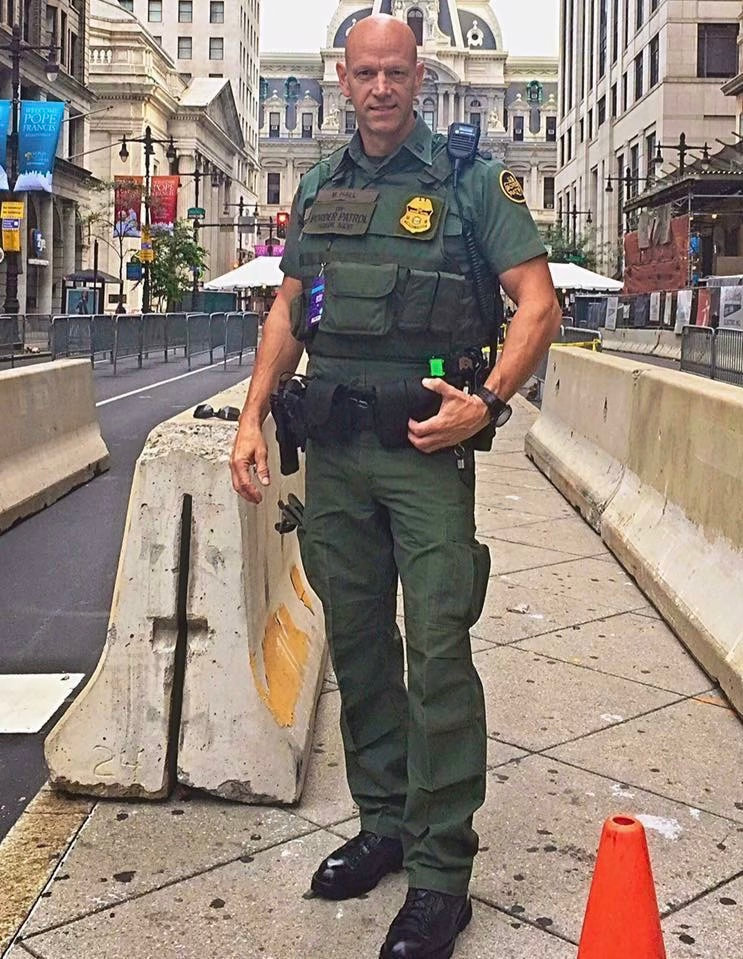
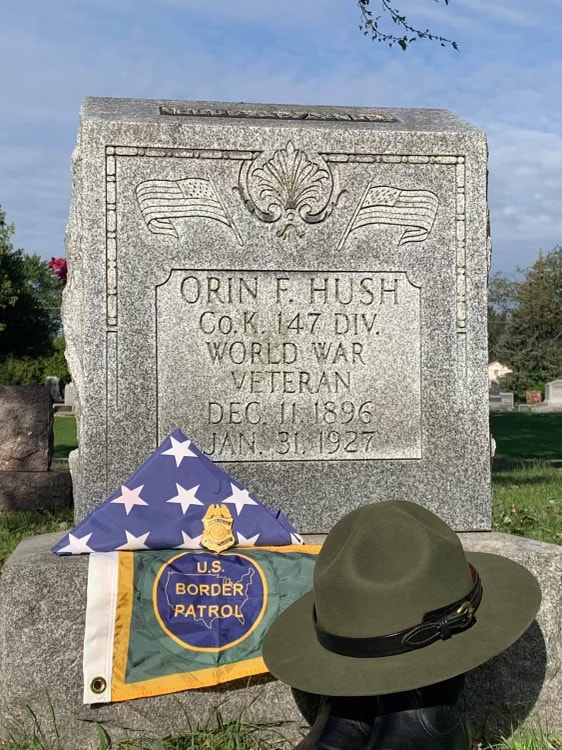
 RSS Feed
RSS Feed
